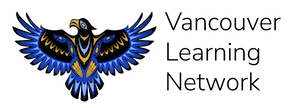Life Sciences 11
Life Sciences 11 Course Overview
Big Ideas
Life is a result of interactions at the molecular and cellular levels. | Evolution occurs at the population level. | Organisms are grouped based on common characteristics. |
From: https://curriculum.gov.bc.ca/curriculum/science/11/life-sciences
Introduction
In this course, we focus on the diversity of life. We start by exploring experimental design and then classification of life. We explore ecological interactions and the process of evolution. We look at life on the microscopic scale with prokaryotic and eukaryotic organisms, and then on the macroscopic scale exploring the world of plants and animals. We will learn about evolutionary trends in complexity, while developing an appreciation for the incredible biodiversity on this planet. There are a few virtual labs in this course as well as some “at home” hands on components.
Where does this course fit?
- Pre-requisite: Science 10
- Graduation Status: One of the Grade 11/12 Science options required for graduation
Course Materials
- This course uses the following textbook: Biology by Miller & Levine. This book is not mandatory to succeed in this course as there are online alternatives that also provide adequate information. Those alternatives are listed in the course introduction. The course notes are also adequate although most students find that doing the supplemental readings from this text have a positive impact on their level of understanding
- You may pick up this textbook at the Vancouver Learning Network. There is a $150.00 refundable deposit to borrow a copy of this resource.
Brief Outline
Course Module | Description |
1) Experimental Design and taxonomy |
|
2) Evolution |
|
3) Ecology |
|
4) Viruses and Monera |
|
| 5) Protists |
|
6) Plants |
|
7) Invertebrate Animals |
|
8) Vertebrate animals |
|
Assessment Percentage Breakdown
Assessment Type | Percentage of the Course |
Startup assignment | 5% |
Assignments (8 in total, one per module) | 22% |
Module quizzes (7 in total) | 13% |
Discussion assignment | 6% |
Midterm exam | 27% |
Final exam | 27% |
You have up to a year to complete your course.

